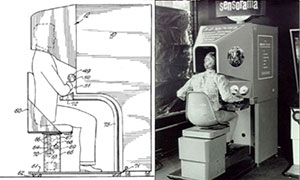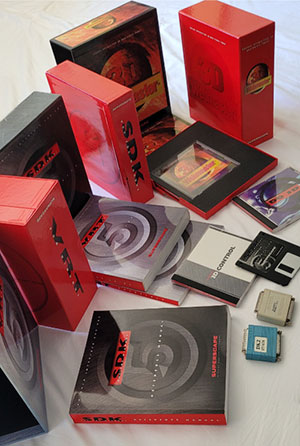METAVERSE IS ALMOST HERE, SAYS MARK ZUCKERBERG
1935
You did it again Mark, your great idea sounds like a remake of Second Life, Blaxxun, Cybertown and other online VR worlds from the 90s.
For neophytes, Mark Zuckerberg strong of a database of users including you, me and 2.9 billion others recently unveiled his new company “Meta”, an amalgam of his social media and communication companies with a twist of virtual reality and a zest of blockchain to become a virtual meta-universe social community. Mr. Zuckerberg and all the other metaverse investors are hoping that soon everyone will be playing with little avatars and conducting all sorts of business and pleasure in their virtual world. Let's see how it will work:
Virtual and augmented reality. The concept goes back 100 years but the first machine was made in 1956, the year I was born.
 |
In the 1950s, Morton Heilig saw theater as an activity that could encompass all the senses, thus drawing the viewer into the onscreen activity. He dubbed it "Experience Theater", and detailed his vision of multi-sensory theater in a 1955 paper, "The Cinema of the Future" (Robinett 1994). In 1956 he built a prototype of his vision, dubbed the Sensorama, along with five short films for it to display.
The Sensorama was a mechanical device, which includes a stereoscopic color display, fans, odor emitters, stereo‐sound system, and a motional chair. It simulated a motorcycle ride through New York and created the experience by having the spectator sit in an imaginary motorcycle while experiencing the street through the screen, fan-generated wind, and the simulated noise and smell of the city. These elements are triggered at the appropriate time such as the case of the release of the exhaust chemicals when rider approached a bus. The petrol fumes and the smell of pizza snack bars were recreated by chemicals. While the machine still functions today, audiences cannot interact with it or that it cannot respond based on the user's actions.
|
In the late 90’s, many internet pioneers like me were interested in VR applications to be used on the web, including virtual online communities. To build those virtual worlds, I purchased the best and most expensive VRT compiler software at the time made by Superscape (I still have it). After building a virtual perfumery, a tradeshow and an online world for teens (I had 2 at the time), I decided to build what was going to be the first B2B portal.
 |
Superscape was a British developer and publisher of mobile games. The company developed several mobile games, licensed from such companies as 20th Century Fox, Universal Pictures, Sony Pictures and Global Wireless entertainment.
Superscape Visualiser users are able to download virtual worlds from the home page and move through them. These worlds include a puzzle cube, a dam, a gas station, and a shopping mall. According to company officials, once you download a specific world, you can move about in real time, listen to sounds, and move objects around.
The Palo Alto, California-based company is giving away the browser technology in hopes of establishing Superscape as a low-cost easy-to-use public virtual reality standard. Once the Virtual Reality Modeling Language (VRML) becomes widespread, interest in virtual reality is expected to skyrocket. Until now, virtual reality technology has been limited mostly to chat applications.
|
Online virtual reality communities. The concept of alternate existence featured at its extreme in the 1999 movie Matrix also marked the decline of the multitude of existing VR online universes. Few of them survived like Second life with a million users living and shopping in it. This was before Covid. For the past 2 years, people have learned how to do almost everything online and now online VR communities have another opportunity to strive.
The components. To build a meta VR universe, you need the virtual platform(s), the hardware (cloud servers), the network (users), the content, services, assets & payment partners and all of the GAFA (Google, Apple, Facebook, and Amazon) have what is needed to succeed, but in my humble opinion the real metaverse if it exists one day around 2035 will bridge & connect all of them. Maybe Nvidia, Microsoft, or intel will find the key.